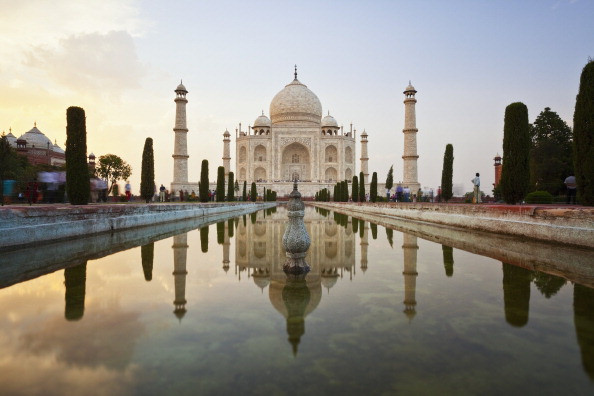India: Monument of love, Taj Mahal, not turning yellow

India's 366-year-old monument of love, Taj Mahal, is not turning yellow, Culture Minister has informed the parliament.
Rejecting the notion that pollution around the UNESCO World Heritage Site has lead to the deterioration of the marble monument, Culture Minister Mahesh Sharma said in a statement: "Local authorities are taking the necessary steps to reduce pollution around the Taj Mahal.
Local authorities are taking the necessary steps to reduce pollution around the Taj Mahal. The Archaeological Survey of India (ASI) is regularly monitoring ambient air quality around Taj Mahal and attending to essential conservation, preservation and environmental development works to reduce the effect of pollution on marble surface.
"The Archaeological Survey of India (ASI) is regularly monitoring ambient air quality around Taj Mahal and attending to essential conservation, preservation and environmental development works to reduce the effect of pollution on marble surface."
Sharma also confirmed that no international experts are being employed to carry out restoration work at the monument, which is in a good state of preservation, reported the Business Standard.
Earlier an Indo-US study had revealed the Taj Mahal was slowly turning yellow due to air pollutants.
The study was jointly conducted by experts from the Georgia Institute of Technology and University of Wisconsin in the US, and the Indian Institute of Technology in Kanpur and Archaeological Survey of India.
"Our team was able to show that the pollutants discoloring the Taj Mahal are particulate matter: carbon from burning biomass and refuse, fossil fuels, and dust – possibly from agriculture and road traffic," said Michael Bergin, a professor in the School of Earth and Atmospheric Sciences at the Georgia Institute of Technology.
Taj Mahal's deterioration was blamed on the air quality in the Indian city of Agra where the historical site is located.
"We found that black carbon gives a greyish colour to the surface while the presence of brown carbon and dust results in yellowish-brown hues," said S N Tripathi of the Indian Institute of Technology in Kanpur, one of the authors behind the study.
"Now that we know what's causing the yellowing, the focus should now shift to undoing the effect."
© Copyright IBTimes 2025. All rights reserved.






















